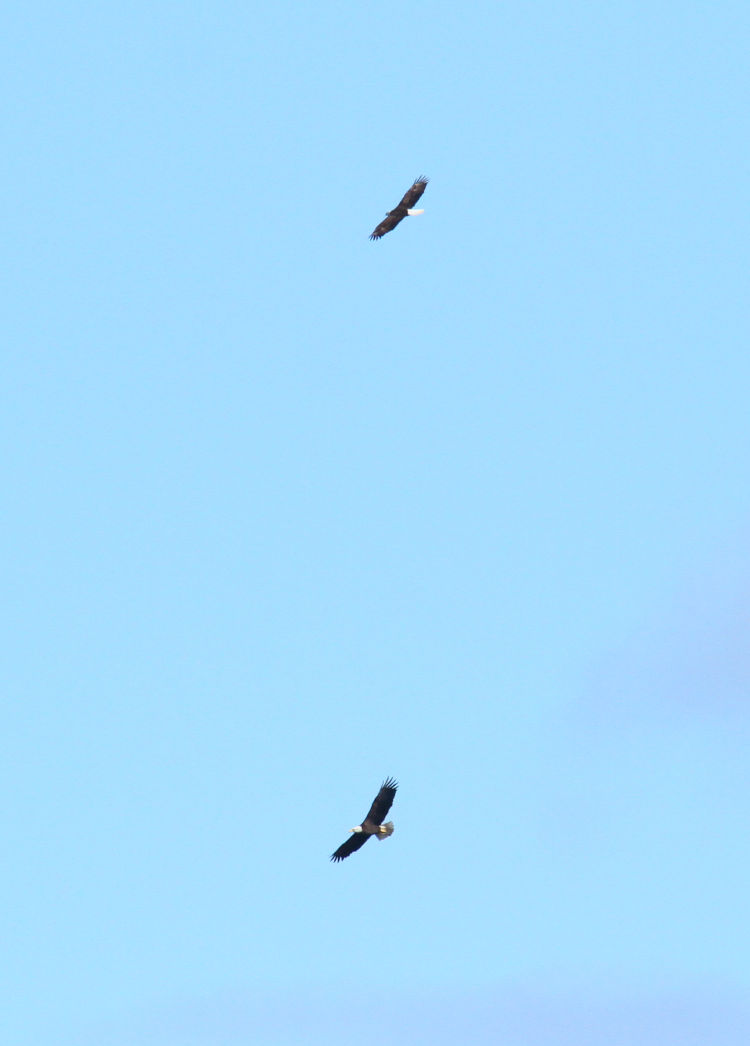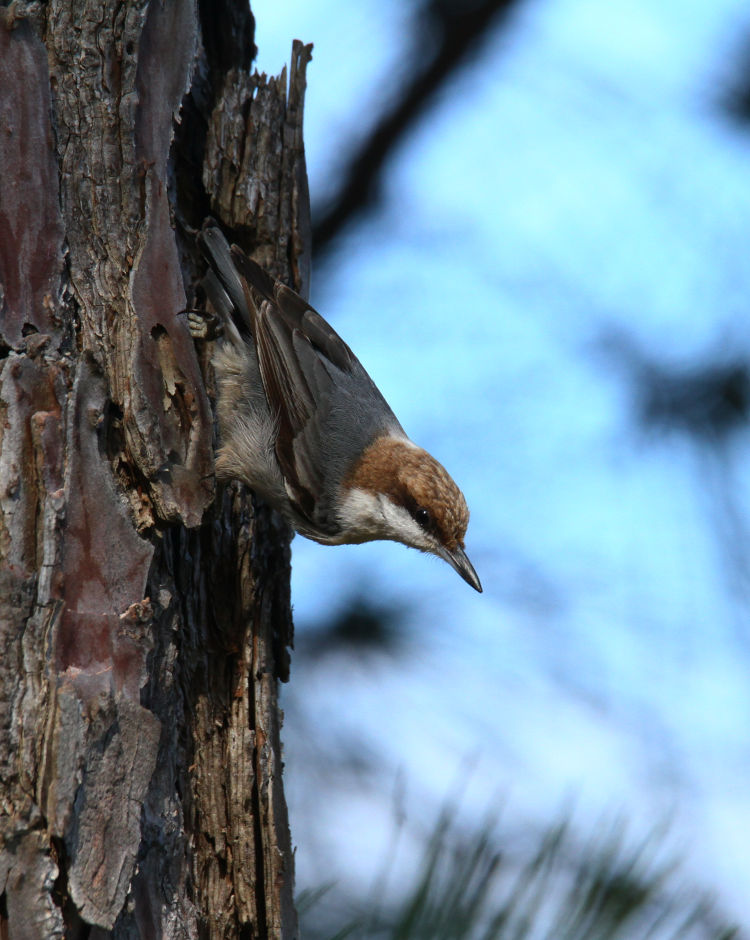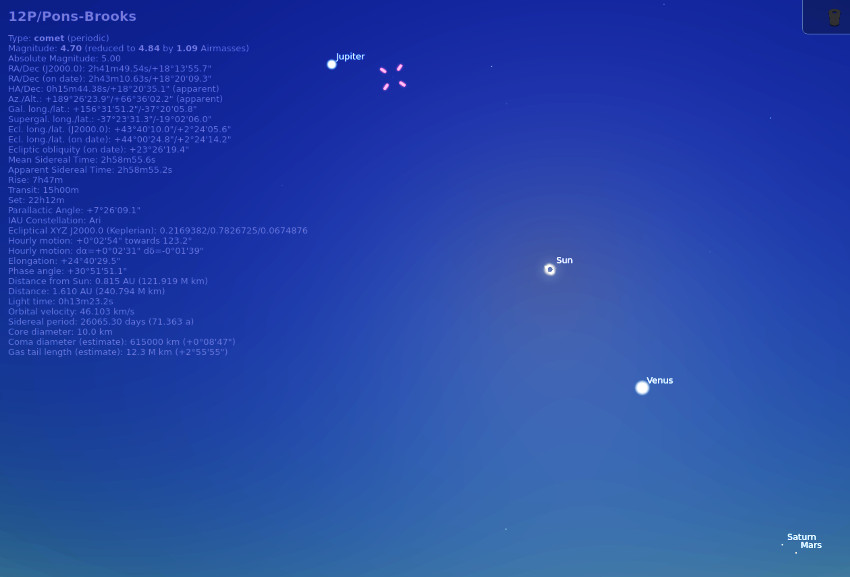What do you mean, “What’s ‘NWP’ stand for?” It’s short for ‘Nature/Wildlife Photography,’ for dog’s sake! Don’t you even text?
But what I’m saying is that, despite the lack of posts, I’ve been busy, just not with… you got it now. I have a handful of photos from earlier, and two from last night; nothing to really make a post from, but some of them will appear here as eye-candy. Not the good stuff, mind you, but that bargain candy that appears around Halloween, chocolate made from wax and lard, kind of thing, but still way better than circus peanuts.

The primary thing that I’ve been concentrating on is astronomy tracking, mostly for the upcoming eclipse. It’s been an interesting journey, but so far, not exactly productive. Lemme ‘splain.
The Earth rotates, producing most of the motion of the sun and moon of course, but also the stars and all those faint night sky objects, the kind that you need longer exposures for. This means that exposure times longer than a few seconds result in streaks from anything in the sky, unless… you counteract this rotation. Decent telescope mounts have motors that do this, as long as they’re aligned properly (which is with the North Celestial Pole, the spot that lies directly above the north end of the axis of Earth rotation – not quite the North Star/Polaris but very very close.) I actually have a telescope with such a motor – not a very good one, but it does at least have one – and I’ve been meaning to get around to finagling a camera mount to use the same tripod-and-motor combo. Which I finally did this past week.

Then I had to play around with mounting the motor and confirming the function, which was trickier than it sounds. The actual motion, down at the axis of the mount, is ridiculously small, and to appearances it wasn’t quite working, so I disassembled both the telescope mount and the motor to clean and lubricate them, and check for problems. Still no appearances of working, despite hearing the motor running. Thinking that the batteries might be too weak (the battery pack takes 10 AA batteries,) I switched it over to AC power and ran a 10-minute test, confirming that it was indeed rotating.
The problem was, the 10-minute exposure test with the camera and long lens attached did not work, producing not just a streak, but a badly wobbly one that would cause the doctors some concern if it appeared on your EKG. Still not exactly sure what this came from, but it might have been partially due to the ballhead slipping, partially to setting this up on the deck where vibration could be too much of an issue. But I’d been playing with things for a few days by this point, doing my work in the daylight but running the tests at night, because that was when I had dim sky targets that could withstand a 10-minute exposure.

Also note: the idea is to have this operational during the total solar eclipse, which oddly seem to always occur during the day, so I would not be able to use Polaris to align the scope, thus I was also experimenting with aligning it by compass and latitude angle. This certainly would not be terribly accurate, but perhaps enough for exposures between 30 seconds and 2 minutes? This is also what I was testing, and failing.
The reason for all this? During totality, four planets will be in the sky and likely visible with the eclipsed sun – as well as a comet! Comet 12P/Pons-Brooks will be not-too-far-away from Jupiter at the time and is expected to be visible, though this is impossible to predict accurately for most comets, more so for the randomly variable nature of this one.

This is unprecedented, and a great opportunity – the comet may easily be visible through binoculars during the brief period of totality, and of course I’d like to get photos of it. I also intend to try for the comet alone anytime in the next coupe of weeks, now that it’s become visible during the early evenings just after sunset, and this is another reason to have a tracking motor – my last attempt was pretty crummy.
[Stellarium can be used to plot exactly where things will be at your location, but comets need to be added to the database first, slightly tricky.]
And there’s one more reason to have a tracking motor for the eclipse. Since all of the Earth save for one small shadow in North America will still be in bright sunlight, that same sunlight is reflecting up to the moon and illuminating, very dimly, the dark side. Which means that earthshine could be visible in the dark circle within the sun’s corona – it will take a long exposure that will bleach out the corona itself, but theoretically it should be possible.
This means thatduring the brief episode of totality, I will be aiming to get telephoto pics of the corona and any solar prominences that may be visible, and wide shots of the planets with the eclipse in the sky, and the comet, and earthshine! All within about three minutes. The comet and earthshine shouldn’t need more than 30 seconds each, probably less, but I honestly don’t know and any experiments will cut into that time – more so because I’ll be using mirror lock-up to combat camera shake, from the camera with the telephoto lens at least.
[The reflex mirror within the camera body slaps up at the beginning of exposures, enough to actually shake the camera a little, which is magnified by using long focal lengths, and this vibration will show up in exposure times between about 1/10 of a second and a minute or three. So a menu option is to lock this in place for a few seconds before the shutter opens, let the vibrations die down, and then open the shutter. Obviously this makes the time between exposures even longer.]

But since the telescope tracking mount doesn’t appear to be a viable option right now, I’ve switched attention over to another option, something called a barn-door tracker. This is a homemade device that does the same thing as a telescope tracking motor, and has to aligned with the North Celestial Pole as well. Plenty of plans abound for making your own, and I’m aiming for a hybrid design, partially based on this one (though I won’t be 3D printing more than the gears and perhaps some brackets,) and using this page to confirm that my design is plausible. It gets a little complicated, because the movement has to be precise to counteract the planet’s rotation, and it comes down to four things: a threaded rod curved to a precise radius (dependent on the number of threads per inch,) careful measurements for radius and motor distance, gearing to produce the exact motion that is needed, and a motor that can maintain an exact speed. This is the reason that I’ve avoided tackling the project until now, because the motor has to be run by a microcomputer.
For most commonly-available threaded rods, the speed needed to drive them is somewhere in the realm of one revolution per minute; standard electric motors don’t run anywhere near that slow. That means the options are a lot of gearing to reduce it, robbing the motor of torque (and a pretty good amount is needed to tilt the weight of the camera,) or a stepping motor. A stepping motor doesn’t spin constantly, but instead a fraction of the rotation every time the voltage is applied – the more frequently you do this, the faster it rotates. But this means you have to tell it to make each of these steps and when, and this is where the microcomputer comes in. It’s not as daunting as it may sound, because there are plenty of very simple ones available right now, the most common of which is called an Arduino. In short: write a few lines of program to tell it what to do, compile this into the language that the microcomputer understands, then upload it through USB into the Arduino. And the very cool benefit of this is, should your design not be as precise as intended and not quite tracking at the right speed, you can reprogram the Arduino to compensate.
I bought the local materials yesterday, and the Arduino, stepper motor, and driver board are on order and expected within the next few days. I’ve been waiting to have the motor in hand, at least, so I can measure precisely where it should be before I start making the support boards – triple-checking everything. I expect the actual construction not to take terribly long – a few hours all told – but the various tests will probably take longer, and the deadline is now looming. If it ends up working, or at least getting close, you’ll see it here soon enough, and with luck and careful attention to detail, you’ll see the results here soon enough as well.
And if you’re trying for your own eclipse photos, total or partial, or even the comet, I urge you to check out as many resources as you can, to be better prepared when the time comes.
Best of luck!




















































